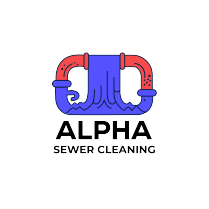24/7 EMERGENCY SERVICES
317 Loring Road Levittown NY 11756
Any type of clogged drain

Clogged drains are a common household and commercial plumbing issue that can lead to inconvenience, water damage, and even health hazards if not addressed promptly. This guide provides an overview of the causes of clogged drains, how to prevent them, and effective methods to unclog them.
Common Causes of Clogged Drains
Accumulation of Grease and Fat
- Kitchen sinks often get clogged due to the buildup of grease, oil, and fat.
- These substances solidify inside the pipes, creating blockages.
Hair Build-Up
- Bathrooms are prone to clogging due to hair that binds with soap scum and other debris.
- Over time, this forms clumps that obstruct water flow.
Food Waste
- Leftovers or large food particles washed down the sink can cause clogs.
- Starchy or fibrous foods like rice, pasta, or potato peels are common culprits.
Soap Residue
- Bar soaps contain fats that mix with water minerals, leading to soap scum.
- This residue can accumulate in pipes, narrowing them over time.
Foreign Objects
- Items like wipes, diapers, sanitary products, or children’s toys often accidentally end up in drains.
- These items don’t break down and can cause significant blockages.
Mineral Build-Up
- Hard water leaves mineral deposits in pipes, reducing their diameter.
- Over time, this can lead to stubborn clogs.
Tree Root Infiltration
- In outdoor or underground drains, tree roots can invade pipes in search of water.
- These roots grow inside, causing severe blockages.
Toilet Paper Overuse
- Excessive toilet paper or flushing non-flushable items can clog toilets.
- Septic systems are especially sensitive to these issues.
Signs of a Clogged Drain
Slow Drainage
- Water takes longer to drain from sinks, tubs, or showers.
Gurgling Sounds
- Unusual noises from pipes indicate trapped air due to blockages.
Foul Odors
- Decomposing food or organic material in clogged drains emits unpleasant smells.
Standing Water
- Water pooling in sinks, tubs, or showers points to a significant blockage.
Overflowing Toilets
- Water rising or spilling over after flushing suggests a clogged drain line.
Backflow
- Water backing up from drains, especially in the lowest fixtures, indicates a serious issue.
How to Prevent Clogged Drains
Dispose of Waste Properly
- Avoid pouring grease, oil, or food scraps down the sink.
- Use a strainer or screen to catch debris.
Install Hair Catchers
- Place hair traps over bathroom drains to collect hair before it enters the pipes.
Flush Drains Regularly
- Pour hot water down drains weekly to prevent grease and soap buildup.
- Use a baking soda and vinegar solution for natural cleaning.
Limit Non-Flushable Items
- Educate household members on what can and cannot go down toilets and sinks.
Maintain Outdoor Drainage
- Keep gutters and outdoor drains clear of leaves and debris.
- Inspect for tree root growth near underground pipes.
Schedule Regular Plumbing Maintenance
- Hire professionals for annual inspections to identify and address potential issues early.
Methods to Unclog Drains
1. DIY Techniques
Plunger
- Effective for sinks, bathtubs, and toilets.
- Creates suction to dislodge clogs.
Boiling Water
- Dissolves grease and soap scum in kitchen sinks.
- Not suitable for PVC pipes or toilet drains.
Baking Soda and Vinegar
- A natural remedy for minor clogs.
- Pour 1 cup of baking soda followed by 1 cup of vinegar, wait, then flush with hot water.
Drain Snake or Auger
- A flexible tool to manually remove clogs from deeper within the pipes.
Wet/Dry Vacuum
- Useful for extracting debris from drains.
- Requires a tight seal over the drain opening.
2. Chemical Drain Cleaners
- Designed to dissolve organic material like hair and grease.
- Use sparingly, as frequent use can damage pipes and harm the environment.
3. Professional Techniques
Hydro Jetting
- High-pressure water streams clear stubborn blockages and clean pipe interiors.
Mechanical Augers
- Heavy-duty snakes used by professionals for deep or severe clogs.
Camera Inspections
- Helps identify the exact cause and location of a blockage.
- Especially useful for underground or hard-to-access drains.
When to Call a Professional Plumber
Repeated Clogs
- Frequent blockages indicate a more serious underlying issue.
Complete Drain Blockage
- If DIY methods fail, professional intervention is necessary.
Foul Odors Persist
- Lingering smells may suggest a deeper problem, such as sewer line damage.
Water Damage
- Leaks or water pooling around fixtures can lead to structural damage if not addressed promptly.
Tree Root Intrusion
- Professionals are equipped to remove roots and repair damaged pipes.
Cost of Drain Cleaning
DIY Solutions
- Minimal costs, typically for tools or household items like baking soda and vinegar.
Chemical Cleaners
- Range from $5 to $25 per bottle.
Professional Services
- Drain snaking: $100–$250.
- Hydro jetting: $300–$600.
- Camera inspections: $150–$500.
Conclusion
Clogged drains are a nuisance but are often preventable with proper maintenance and awareness. By identifying common causes and using effective prevention methods, you can minimize the occurrence of clogs. For persistent or severe issues, don’t hesitate to seek professional assistance to protect your plumbing system and maintain the health of your home or business.
Newsletter
Drain cleaning involves removing clogs, debris, and buildup from pipes to restore proper water flow. It ensures smooth drainage, prevents blockages, and protects plumbing systems from damage. Professional drain cleaning uses tools like hydro jetting or augers for efficient and lasting results.
Design By Oll Solutions

